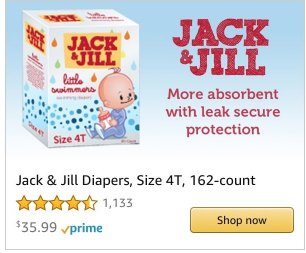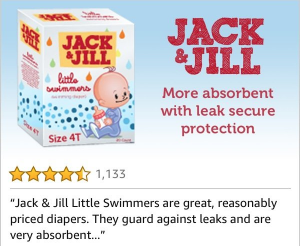Amazon is testing a new ad format that asks customers to leave reviews
Amazon is working on a new ad product that prompts users to review products they’ve purchased within display ads placed on Amazon.com, according to three agency executives who have been briefed on the new product.
The new review format will be targeted to people who have bought certain products, and will ask them to tap on a number of stars to leave their feedback. The ad will be sold to brands on a “cost-per-review” basis, said one buyer.
Reviews are a huge part of Amazon’s focus, and positive ones can help boost sales. About 20 percent of sales are driven by reviews, and a third of online shoppers say they won’t buy products unless they have gotten positive reviews, according to data from Power Reviews.
“Remember a trip back to Amazon, even to leave a review, is likely to increase new-purchase consideration, so it’s a fantastic idea that seems a long time coming to all of us,” said Wunderman Commerce agency Marketplace Ignition CEO Eric Heller.
Amazon declined to comment.
Adding review ads to its existing ad offerings creates a neat circle around brands. Brands can now pay Amazon to help them with reviews, which leads to more goods being sold, and also buy more advertising within Amazon among its other myriad ad products. In some ways, Amazon is proving its own heft with the new ad product — something it can do because it controls everything from discovery (50-percent-plus of searches now start on Amazon) to actual purchase.
Amazon is strict with its review policy. It bans paid reviews. And more recently, it started banning what it calls “incentivized” reviews, where customers get free products or discounts in exchange for reviews.
That is except for two cases: books or if reviews are part of the Vine program. Vine is a review-influencer program, where brands can pay Amazon to send products to star reviewers in exchange for products.
While the review ad format is new (buyers said Amazon is currently demo-ing it to select agency partners), current display ad formats do include one called “customer review,” which shows an Amazon star rating and a total review number. If users click on that, that leads to the “read all reviews” page for the product. Other variations on the format include a display ad that shows review text. Examples below:
To be eligible for these formats, products must have a star rating of at least 3.5 and a minimum of 15 customer reviews.
This is common for Amazon, which bars brands with low ratings from buying display ads — which makes sense, since the return on their ad spend is probably going to be low. The new review ad is a way to close the loop: Sell it to brands in need of reviews, so they can, in turn, sell more on Amazon and even buy more advertising.
It’s also not necessarily a new format: About five years ago, e-commerce rating and review hosting company Bazaarvoice had partnered with CPG brands for display ads that asked for reviews, on platform and off.
More in Marketing

Some creators say brands are delaying their holiday deals later than ever this year
After front-loading budgets in the first half of the year, brands strike last-minute deals with creators ahead of the holiday shopping season.

Agency new business crunch now permanent, say execs
Agencies report unreasonable deadlines and time commitments from clients are becoming more common, while new research reveals marketer and agency despair at pitch process.

How one Midwestern department stores sees itself as a ‘hidden gem’ for ‘Instagram brands’
Iowa-based Von Maur considers itself an underdog among department stores. But the retailer says it has unique qualities that are attracting hip brands like Dagne Dover, Ana Luisa and Lulus.







